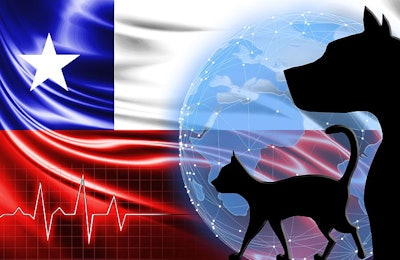
Pet population in Latin American markets is a complex metric to determine with accuracy as no official censuses or pet registrations exist, leading to misestimation of the number of pets living in a country. This bias is of utmost importance to pet food producers because they need accurate pet numbers to predict their business opportunities and future investments.
The first market to publish official statistics on its pet population was Mexico, after performing a national survey in 2021. The results were astonishing: The new pet population reached 60 million dogs and cats, while the industry consensus had estimated less than half that.
A year later, in 2022, the Chilean government performed a similar study to update the current pet population in the country. The analysis estimated a population of 12.5 million dogs and cats with owners and an additional 4 million pets with no owners. In other words, dogs, and cats with owners account for 63% of the human population of 19.83 million in that country.
Pet population underestimation is widespread in the region
The Mexico and Chile projects revealed that the number of pets is notably higher than that of the local consensus. Other markets in the region likely experience the same situation.
The pet population underestimation is good news for pet food manufacturers. For example, according to unofficial data gathered by Triplethree International, the current pet population of dogs and cats in Latin America stands at more than 200 million pets in 20 countries. Yet such a population figure may be underestimated by around 50-70%, and then the actual number of pets in the region would stand easily at more than 300 million pets. That means more mouths to feed.
Why Latin American pet food markets keep growing
Regardless of economic setbacks, the pet food market in most countries shows a consistent positive upward trend over time. The likely reason explaining such growth is the vastness of the pet population. Millions of uncounted new dogs and cats create a demand for more pet food in all countries. Moreover, such pet population dynamism is part of a global trend toward pet ownership that will likely continue in the foreseeable future.
Latin American pet food manufacturers may see such a trend as a window of opportunity for the coming years, not only to launch more traditional pet food products but also to introduce innovative products, formulations and ingredients. As the pet population suggests, there is plenty of room for growth.

















